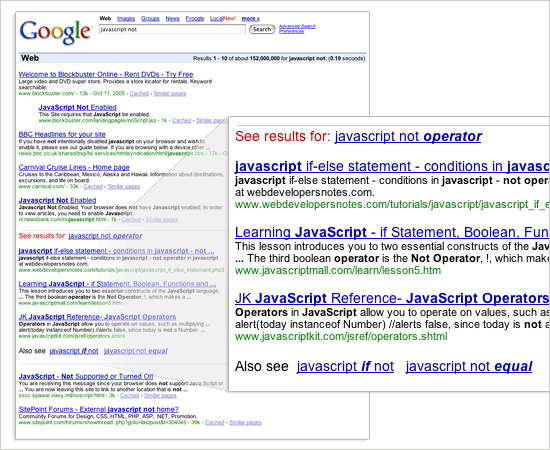In April, I asked a panel of search experts from Yahoo, Google, A9, and Ask Jeeves about the ubiquity of ordered lists of search results: the hallmark of every search engine's user interface. Couldn't we do better I asked? There is so much advanced technology present in the back-end of a search engine -yet the best we can show users is an ordered list of ten results and tell them to go fish?
Peter Norvig from Google commented that clustering technology was not yet advanced enough to provide meaningful information to users. Six months later, however, Google has quietly begun to "cluster" their results. Two recent examples I came across: search for NCSA and search for javascript not. In both cases, the page was divided into:
- Top 5 standard search results (top half of the page)
- Top 3 results for a specific concept (labeled as ìsee results forî)
- Links to additional concepts (labeled as ìalso seeî)
- Next 2 standard search results

As I mentioned before: "We are faced with more information each day. A9 has over 28 million images of streetscapes in its database. BlogLines indexes 1.6 million blog entries a day. This makes information about information increasingly important." It seems like Google's "clusters" are a step in the right direction.